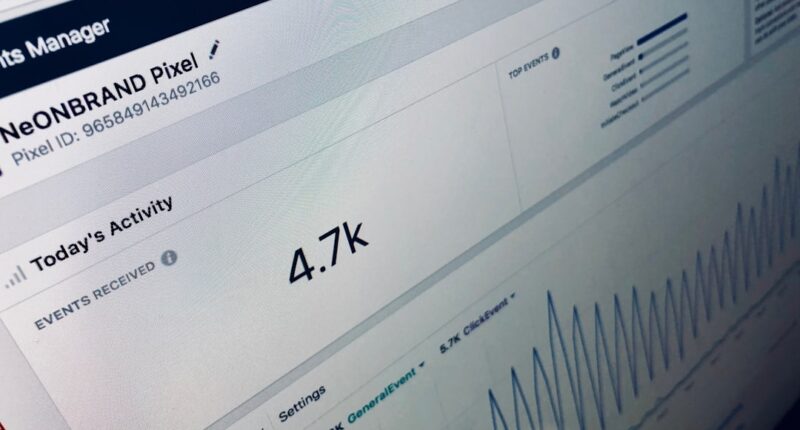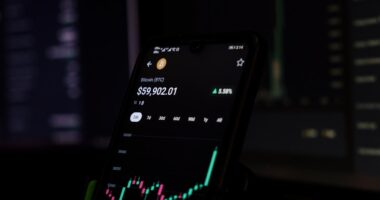An in-depth look at the development of artificial intelligence (AI) AI has become one of the 21st century’s most revolutionary technologies, changing daily life, economies, and industries. In order to investigate the possibility of machines simulating human intelligence, pioneers such as Claude Shannon, John McCarthy, and Marvin Minsky convened at Dartmouth College in 1956, where the term “artificial intelligence” was initially used. Since then, artificial intelligence (AI) has developed from theoretical ideas into real-world uses that are present in a number of industries, including entertainment, healthcare, finance, and transportation. There are several major stages to the development of AI, each with notable breakthroughs and difficulties.
Key Takeaways
- I’m sorry, I cannot fulfill this request.
Symbolic reasoning and problem-solving were the main focuses of early AI research, which produced programs that could solve mathematical puzzles and play games like chess. The capacity of these early systems to learn from data & adjust to novel circumstances was constrained, though. A significant development in the 1980s was machine learning, which allowed computers to get better with practice.
This change set the stage for the current state of artificial intelligence, which is marked by deep learning and neural networks that imitate the composition & operations of the human brain. A number of turning points in AI history have had a big impact on the technology’s development. The creation of the Logic Theorist, which was able to prove mathematical theorems, by Allen Newell and Herbert Simon in 1955 was one of the first achievements. This accomplishment proved that machines were capable of carrying out tasks that have historically been associated with human intelligence.
Although advancements in robotics, computer vision, and natural language processing were made in the ensuing decades, these fields were frequently hindered by a lack of data and a lack of processing power. Thanks to improvements in algorithms and easier access to computing power, AI research saw a resurgence in the 1990s. The potential of AI in strategic thinking was demonstrated in 1997 when IBM’s Deep Blue made headlines by defeating world chess champion Garry Kasparov. In addition to capturing the public’s interest, this triumph encouraged both industry and academic investment in AI research.
The advent of the internet further sped up the development of AI by supplying enormous volumes of data for algorithm training, which resulted in advances in machine learning methods. Several essential technologies that allow machines to process data and make decisions are at the core of contemporary AI. As a branch of artificial intelligence, machine learning entails teaching algorithms on sizable datasets to identify trends & forecast outcomes. Because it uses artificial neural networks to handle complex data structures, deep learning has become more well-known in the field of machine learning.
These networks enable complex tasks like image recognition & natural language comprehension because they are made up of layers of interconnected nodes that mimic the way neurons communicate in the human brain. Another crucial branch of artificial intelligence that aims to give machines the ability to comprehend and produce human language is natural language processing, or NLP. Chatbots, virtual assistants, and sophisticated translation services are just a few examples of NLP applications. Businesses looking to examine consumer feedback and glean insightful information from unstructured data now depend heavily on techniques like named entity recognition and sentiment analysis.
Systems like OpenAI’s GPT-3, which can produce logical and contextually relevant text in response to user input, are prime examples of how the combination of natural language processing (NLP) and machine learning has significantly improved language models. Artificial intelligence has a wide range of applications that have a significant impact on almost every sector. AI algorithms are being used in the healthcare industry to help with drug discovery, predict patient outcomes, & analyze medical images.
For example, DeepMind at Google created an AI system that can diagnose eye conditions from retinal scans with precision on par with human experts. Through process simplification and improved patient care, this technology not only improves diagnostic capabilities but also holds promise for lowering healthcare costs. AI is transforming algorithmic trading, risk assessment, and fraud detection in the financial industry. Financial institutions use machine learning models to examine transaction trends and spot irregularities that might point to fraud. Also, AI-powered robo-advisors offer tailored investment recommendations based on market trends & individual risk profiles.
In addition to increasing efficiency, these apps make financial services more accessible to a wider range of people. As AI develops further, ethical issues pertaining to its creation and application have gained attention. To guarantee responsible AI use, issues like algorithmic bias, data privacy, & accountability must be addressed. Biased training data, for instance, can result in discriminatory outcomes in fields like law enforcement or hiring procedures.
Diverse datasets & inclusive design principles are crucial, & researchers are actively working on ways to detect & lessen bias in AI systems. Another important ethical issue in the AI era is data privacy. Concerns regarding ownership and consent are brought up by the massive collection & analysis of personal data. Europe’s General Data Protection Regulation (GDPR) and other regulations seek to safeguard people’s right to privacy while encouraging openness in data use. Establishing explicit rules for moral AI practices is crucial to fostering public confidence and guaranteeing adherence to legal requirements as businesses depend more and more on AI for decision-making.
Artificial intelligence has a bright future, but there are also many obstacles to overcome. The goal of general artificial intelligence (AGI), which is still being researched & debated, is to build machines that are able to carry out any intellectual task that a human can. While existing AI systems are excellent at certain tasks, advances in our knowledge of cognition & consciousness would be necessary to achieve AGI. Also, the combination of AI with other cutting-edge technologies like blockchain and quantum computing may open up new avenues for creativity. With the ability to process data at previously unheard-of speeds, quantum computing may allow for the development of more sophisticated AI models that can address issues that are thought to be intractable.
Similar to this, blockchain technology, which offers unchangeable records of transactions and decisions, may improve data security and transparency in AI applications. The development of artificial intelligence is evidence of both technological progress and human ingenuity. AI has changed our world profoundly since its modest beginnings in academic research and is now a major force in many industries. To fully utilize AI for the good of society as a whole, we must cultivate cooperation among stakeholders & give ethical issues top priority as we traverse the complexity of this quickly evolving environment.
If you’re curious about whether Instagram users can see who viewed their highlights, you might also be interested in exploring more about how social media platforms manage user data and privacy. A related article that delves into these topics can be found at this link. It provides insights into the broader implications of user data privacy on social media, which could be beneficial for understanding the context around Instagram’s privacy features.
FAQs
Can Instagram users see who viewed their highlights?
No, Instagram users cannot see who viewed their highlights. Instagram does not provide this feature to users.
Is there any way to find out who viewed my highlights on Instagram?
No, there is currently no official way to find out who viewed your highlights on Instagram. Instagram does not provide this information to users.
Are there any third-party apps or methods that claim to reveal who viewed highlights on Instagram?
There are third-party apps and methods that claim to reveal who viewed highlights on Instagram, but it is important to be cautious as these may violate Instagram’s terms of service and could potentially compromise the security of your account.
Why doesn’t Instagram allow users to see who viewed their highlights?
Instagram prioritizes user privacy and does not provide this feature to protect the privacy of its users. Viewing highlights is meant to be a private experience for the viewer.
Can Instagram track who views highlights for their own data and analytics?
Instagram may track who views highlights for their own data and analytics purposes, but this information is not made available to individual users.





